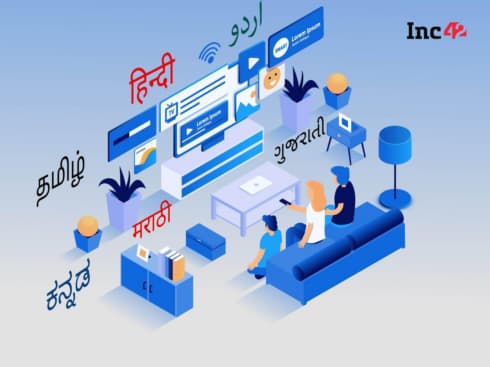
ChatGPT's latest update introduces support for Hindi and other Indian vernacular languages such as Assamese, Kannada, Tamil, Telugu and others
The move is expected to give a major boost to ChatGPT’s usage, especially in the Indian market which has seen a resurgence in vernacular-led content in recent times
The announcement comes weeks after OpenAI cofounder Sam Altman met prime Minister Narendra Modi in New Delhi earlier this month
As competition from Google’s Bard heightens, OpenAI has unveiled multilingual support for generative artificial intelligence (AI) chatbot ChatGPT.
As part of this, users will now be able to access the chatbot in multiple Indian languages such as Hindi, Kannada, Gujarati, Kannada, Marathi, Tamil, Telugu, Urdu, Bhojpuri, Bengali, Punjabi and Malayalam.
The move is expected to give a major boost to ChatGPT’s usage, especially in the Indian market, which has seen a resurgence in vernacular-led content in recent times. The support will likely give it more heft against competitor Google as it looks to scale its presence in the country.
Even though only a limited number of Indian languages have been included in the list, the initiative could pave the way for the incorporation of other local languages in the future.
The platform deploys large language models (LLMs) trained on domain-specific data, which are better equipped to understand the context and nuances of the question. It breaks down the question into parts and then uses its database and training data to arrive at a related answer for the users.
It is pertinent to note that the performance of LLMs depends on factors such as the size and quality of training data, the model’s architecture and the quality of the pre-processing and post-processing techniques used.
Now, let’s delve deeper into how to use ChatGPT in Hindi or any other desired Indian language. To access ChatGPT, users have to go to the official website of ChatGPT, find the language options inside the chat interface, and then choose the language they want to use.
Select Your Preferred Indian Language: From the list of languages available, choose the vernacular medium that best meets your needs. This step guarantees that ChatGPT knows what you’re saying and responds appropriately in the language of your choice.
Start the conversation: You may start the conversation by entering your question or message in the Indian language that you want. To ensure that everything is understood, be sure to use proper grammar and clear, succinct wording.
Engage in Conversation: Immediately after the submission of your question, ChatGPT will do an analysis of the provided data and provide a response written in the same language. The sophisticated natural language processing capabilities of the model provide it with the ability to recognise context and supply replies that are both relevant and instructive.
Continue the discussion: Pose follow-up questions or provide more context as necessary as you continue the discussion with ChatGPT by engaging in a back-and-forth dialogue with it. This recurrent procedure guarantees that the information exchanged is both thorough and acceptable.
This adds to the ongoing spate of generative AI launches that the world has seen in the past few months. Earlier this week, Mudrex launched an AI chatbot called SatoshiGPT that simplifies complex cryptocurrency-related topics for its users. Even OpenAI has unveiled new LLMs such as GPT4 which processes images and allows users to input a longer string of characters.
The support for Indian languages comes weeks after OpenAI cofounder Sam Altman India visit, and where he also met Prime Minister Narendra Modi. The company also has focussed its energies on the Indian market and recently expanded the availability of ChatGPT for Indian iOS users.
India presents a huge opportunity for OpenAi owing to its huge population and growing internet user base. The increasing influx of Indian users could also help train its AI systems better and spur its presence in the global generative AI market which is projected to reach a market size of $126.5 Bn by 2031.































 Ad-lite browsing experience
Ad-lite browsing experience